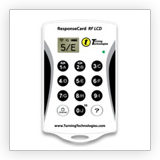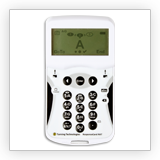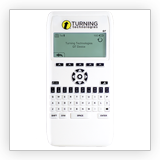



Introduction to Computer Programming is the first course in our series introducing students to computer science. In this class you will learn the fundamentals of computer programming in Java, with emphasis on applications in science and engineering. You will also learn about the broader field of computer science and algorithmic thinking, the fundamental approach that computer scientists take to solving problems.
Your final grade for CIS 110 is determined by the following components. Click on each component to read the policies governing that component.
| Component | Weight |
|---|---|
| Homework assignments | 50% |
| Midterm examination | 15% |
| Final examination | 25% |
| Lecture attendance and participation | 5% |
| Recitation attendance and participation | 5% |
The midterm and final examinations are graded on a curve. We reserve the right to grade the homework on a curve as well, to compensate for stricter grading guidelines than in past semesters. The lecture and recitation attendance and participation components are not curved. After each exam, the Professors will announce a conversion from the exam raw score to a curved score for the component. The homework curve will not be posted, but if we curve the homework, it will normally be in a way that raises your course grade.
The following scheme shows the translation from curved scores to letter grades:
| For curved scores in the range | The awarded grade will be | The grade point average contribution will be |
|---|---|---|
| 97% ≤ score | A+ | 4.0 |
| 93% ≤ score < 97% | A | 4.0 |
| 90% ≤ score < 93% | A- | 3.7 |
| 87% ≤ score < 90% | B+ | 3.3 |
| 83% ≤ score < 87% | B | 3.0 |
| 80% ≤ score < 83% | B- | 2.7 |
| 77% ≤ score < 80% | C+ | 2.3 |
| 73% ≤ score < 77% | C | 2.0 |
| 70% ≤ score < 73% | C- | 1.7 |
| 67% ≤ score < 70% | D+ | 1.3 |
| 63% ≤ score < 67% | D | 1.0 |
| score < 63% | F | 0.0 |
There is no D- grade at Penn.
The Professors reserve the right to adjust grading policies. Final grade determinations are made by the Professors.
Your grade is based on your performance on the components as described above. Only the work completed during the semester in accordance with course policies will be used in the determination of your grade. It is not possible to make up work in order to improve your grade or compensate for violations of course policy.
Incompletes, with permission to complete coursework after the semester ends, will be granted only in verifiable cases of serious, extended illness or similar extraordinary circumstances.
A serious lack of effort may be grounds for failure in the course. If you find yourself in any of the situations below, you should meet with one of the Professors promptly to discuss your situation.
It is imperative to understand that computer programming is not a spectator sport. To get good at it, you need to practice, and the primary vehicle for that is the assignments.
Assignments are due 11:59 pm Eastern Time unless otherwise posted. Most, but not all, assignments will be due on Thursdays.
Assignments are submitted through the submission system. You may submit as often as you like without any penalty. Course staff will only grade the latest version of each submitted file. The submission system enforces the deadline. After the No Credit deadline, you will not be able to submit.
If and only if you experience issues with the submission system, email your code to your recitation TAs before the deadline, documenting the fault that you observe with the system. Your TAs will normally give you an extension to resubmit the assignment once during the semester. Make sure you submit your next assignment early so that we can resolve any remaining issues.
You have four (4) late days to use during the semester. You may use at most two (2) late days on each assignment. Each late day allows you to submit an assignment up to twenty-four hours late.
To use your late days, submit your assignment after the deadline. Your last submission for an assignment is the one that is graded and used to compute the number of late days used. You do not need to ask permission to use your late days, nor give any reason.
If you have at least two late days remaining, the submission link for a given assignment will disappear forty-eight (48) hours after the deadline. At this point, if you have not submitted, you will not receive credit for that assignment. If you have one late day remaining, the submission link will disappear after twenty-four (24) hours, and if you have no late days remaining, the submission link will disappear at the deadline.
Late days are intended to help you through an especially busy week, a cold, and other issues that may crop up during the semester. If the deadline is approaching, submit. It is better to submit an incomplete assignment than nothing.
Extensions will be granted only in exceptional, verifiable circumstances (e.g., extended, serious illness). It is your responsibility to provide documentation. Extracurricular obligations, heavy workloads in other courses, and mild illnesses like the common cold are covered by the late day policy.
You may not use late days together with an extension on a given assignment. This rule is enforced by the submission system.
Extensions are valid only if entered into the submission system. They should be visible in the submission system within a day of being granted: otherwise, contact the member of the course staff who granted your extension.
Opportunities for (optional) extra credit may be offered on some assignments. The amount of work and difficulty may vary widely: some extra credit will be easy to obtain, while other extra credit may be more challenging. The overall effect of extra credit on your final grade is limited. Extra credit will only be able to increase your final grade percentage by a maximum of about 1%. An extra credit point on an assignment is not counted the same as a regular point on an assignment.
We encourage you to do the extra credit portion of the assignment when it you find it fun and rewarding, but never at the expense of the main assignment.
Your recitation TAs grade the last assignment submission in the submission system in accordance with a detailed rubric that is prepared specific to each assignment and consistent across the entire course. Assignments are graded out of thirty (30) points.
If you believe your assignment was incorrectly graded, you may request a regrade from your recitation TAs at most one week after the assignment was returned. The course staff reserve the right to regrade the entire submission, and your resulting grade can result in a lower or higher grade than the original grade.
All assignments are required. However, we realise that an assignment can go badly for various reasons. Thus, as long as all of your assignments receive a score of at least 10 points out of 30, the one with the lowest score will be dropped. If any assignment receives fewer than 10 points, then no assignments will be dropped. This policy is intended to encourage you to demonstrate at least minimal effort in completing each assignment.
CIS 110 is a challenging course that requires a substantial amount of time for most students. Many of you are learning a new kind of abstraction (algorithmic thinking), a new way to express procedures (programming), and a new level of discipline in thought (precision and rigour). Working through the assignments, encountering errors and bugs, and finding the solutions yourself are absolutely essential to learning these skills. To this end, CIS 110 institutes and enforces a strict collaboration policy to ensure that all students are learning effectively. Suspected violations of this policy are systematically referred to the Office of Student Conduct, and generally incur both a disciplinary sanction and a grade deduction.
On the homework assignments, we use automated "cheat-checking" software to help detect plagiarism and inappropriate collaboration. This software is very, very effective. According to the Annual Report of the Penn Office of Student Conduct, there were 127 referrals for undergraduate academic misconduct in 2013–2014. Of these, 55 of these cases, or nearly 45% were referred from CIS 110. By taking the collaboration policy as seriously as the course staff does, you will not only help reduce this number, but you will also help yourself and your fellow students learn more effectively.
These restrictions may seem artificial. After all, in the real world, computer scientists and programmers collaborate freely all the time, and so do CIS majors. In many upper-level CIS classes as well as in industry, looking up answers online, debugging code together, and sharing code are all permitted and encouraged. However, these behaviours are forbidden in CIS 110: CIS 110 is not an upper-level class, and it is not the real world. These restrictions help you learn.
The collaboration policy sounds scary because we take it very seriously. But it is not meant to prohibit all discussion and collaboration. It is intended to limit only the forms of collaboration that undermine the learning goals of the course. Here are some ways that we encourage you to work together and to get help:
Suspected violations are referred to the University of Pennsylvania Office of Student Conduct (OSC).All implicated students are referred, whether or not they are all in violation. The OSC will contact each student who has been referred, conduct an investigation, and determine any disciplinary sanctions. You may find the following information helpful if you are referred.
Violations of course policy also factor into your course grade.
"Only the institution, acting through its formal processes, may discipline a student. Grades are not sanctions, even if they arise from a judgment that a student has violated a norm of academic integrity. In such cases, the grade may reflect the faculty member's view that a piece of work was done inappropriately, but it represents a judgment of the quality of the work, not a record of discipline for the behavior."
Attendance and participation at lectures are required except when otherwise announced.
CIS 110 uses clicker-based polling in lecture. Your participation in these polls will count as part of your grade. In most or all cases, clicker polls will be used to start discussions rather than end them. That means we want you to think about the question, but we will not grade you on the correctness of your clicker poll answer. In fact, for most polls, we will not even look up your individual answer.
Penn has standardized on Turning Technologies clickers for all courses that use clickers. In CIS 110, you can use any of the following models, and there is no advantage to having a fancier one. (Other courses may, however, require features of the NXT and/or QT models.)
 |
 |
 |
 |
| ResponseCard RF | ResponseCard RF LCD | ResponseCard RF NXT | ResponseCard RF QT |
| Images courtesy of Turning Technologies | |||
You will be able to get the NXT and/or QT models from the Penn Bookstore. They are the same price. We have been told that university is migrating to the QT model since some courses may requires its features. (CIS 110 will not use any features that are specific to any of these models.) According to Penn Bookstore, if you purchase a clicker there, you will be able to sell it back at the end of each term for a "significant fraction" of its purchase price.
You can also purchase a clicker from the Turning Technologies online store. Penn has provided a school code, BG2Y, which may provide a substantial discount on your purchase.
You are also welcome to purchase your clicker from any other store or second-hand from another student, paying attention to the model that you purchase. If you already have a clicker of one of the above models from another course, you should be able to use it for CIS 110. There is no need to buy a new one.
CIS 110 is relaying information about purchasing clickers only as a courtesy to you, and is not party to any contract you may make with anyone regarding your purchase. CIS 110 is not responsible for the accuracy of this information, and is not liable for any loss relating to your purchase. You should communicate directly with merchants to purchase your clicker.
Once you obtain a clicker, you can view and update your Clicker ID through the submission system. Do this as soon as possible, although any past polls you answered with this clicker should automatically be attributed to you as soon as you register it.
If you obtain a new clicker during the semester, you should update your Clicker ID through the submission system. Previous responses using your old clicker are still saved, but you will not be able to use your old clicker in the future.
When the lecturing Professor asks a question and opens a poll, press the key on your clicker corresponding to your answer before the poll is closed. Wait for the checkmark or LED indication on your clicker to verify that your participation was recorded.
On the submission system, you can view the polls that you have participated in. This will help you verify whether your clicker works.
If you must miss your registered lecture section, you may attend the other lecture section. However, this circumstance should be occasional since both lecture sections are full.
Your grade for lecture participation is based upon the number of polls answered during the semester. We only begin counting lecture participation beginning after the course selection period. This means that students who add the class after it has begun have some time to obtain a clicker.
We allow for a reasonable number of missed polls to account for dysfunctional clickers or occasional absences from lecture, such as for illness, religious holidays, job interviews, and other temporary absences. You should not notify us if you will miss a lecture for one of these reasons. Frequently missing lecture, leaving early, arriving late, or not participating in clicker polls will affect your grade for the lecture participation component.
You are responsible for having a functional clicker with you in lecture. If you suspect that your clicker is broken, please approach the Professor after the lecture so that we can test your clicker. There is no way for us to manually mark you present.
If illness, family emergency, religious holidays, or other reasons preclude your attendance from a couple of lectures, you should fill out a Course Absence Report on Penn InTouch. You do not need to contact us.
The slides and lecture livecoding examples are provided on the syllabus page. The same page has a link to the lecture recordings archive, which is available after logging in with your PennKey. The lecture recording system is not ideal since it captures only the primary projector screen: it does not record the chalkboard, the second projector screen, or other students' questions. CIS 110 cannot be responsible for the failure of the recording system.
Giving another student your clicker is a violation of academic integrity and will result in any of the following consequences:
Attendance and participation at recitation are required except when otherwise announced.
One half of your recitation attendance and participation grade is for attendance. Your recitation TAs will mark you present. We allow for a reasonable number of absences to account for illnesses, religious holidays, job interviews, and other temporary absences.
If you are not able to attend your scheduled recitation, then you may attend another recitation section. You must introduce yourself to the TAs of your substitute recitation and provide your PennKey so that they can mark you present. In addition, you should email the TAs of your original recitation so that they know that you will be absent. You may not attend a different recitation more than twice over the course of the semester.
One half of your recitation attendance and participation grade is for participation, as assessed by the recitation TAs. The recitation TAs have sole discretion in assigning a participation grade for each recitation. You are expected to actively take part in recitation activities and discussions.